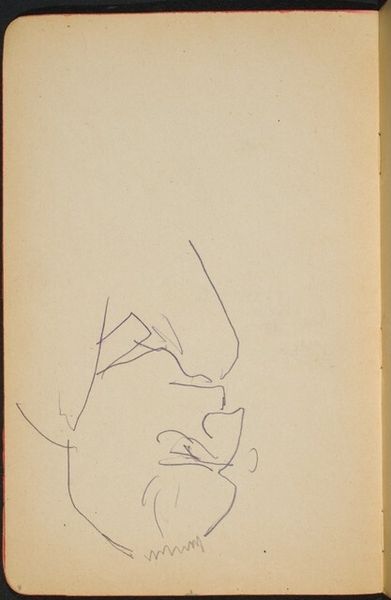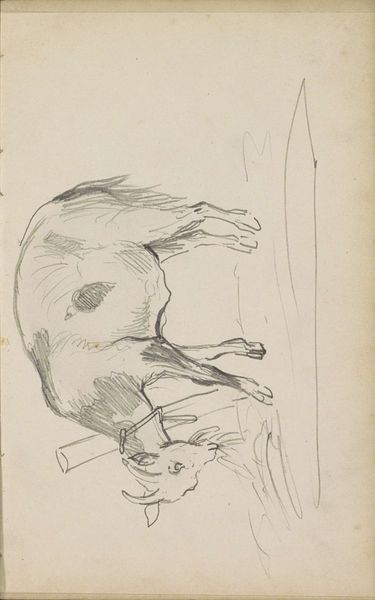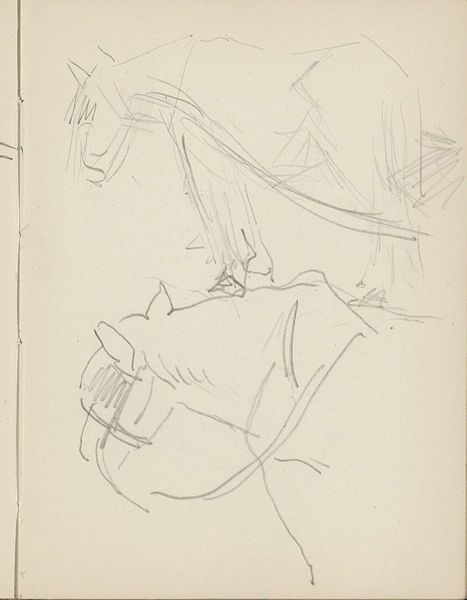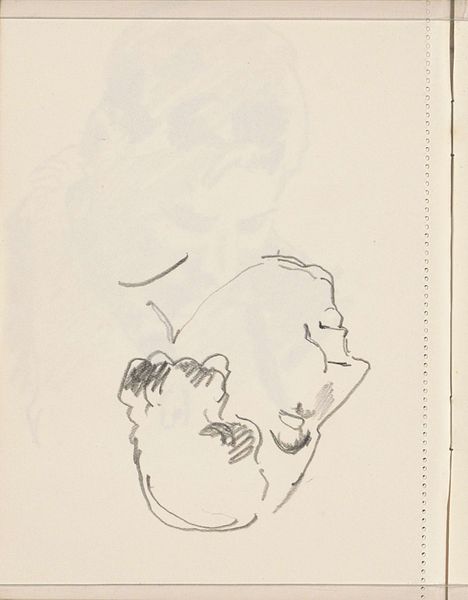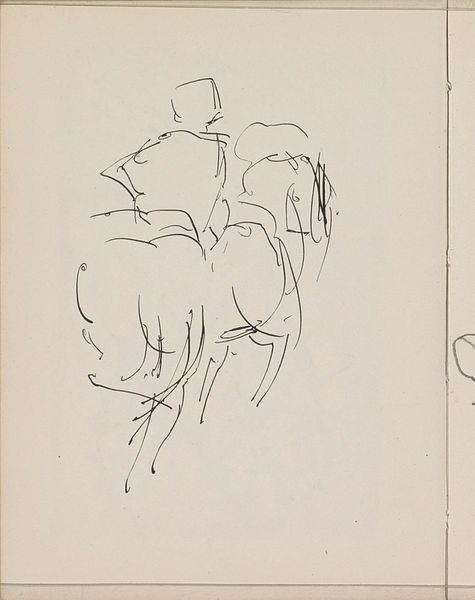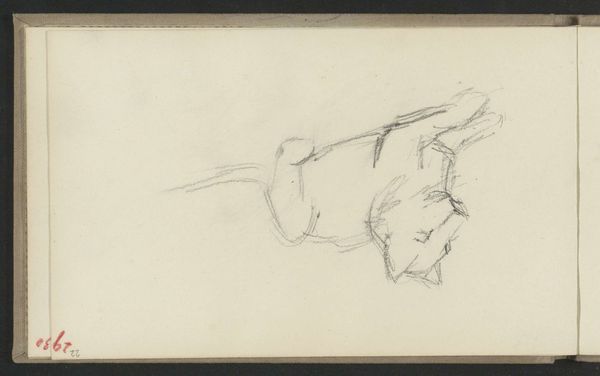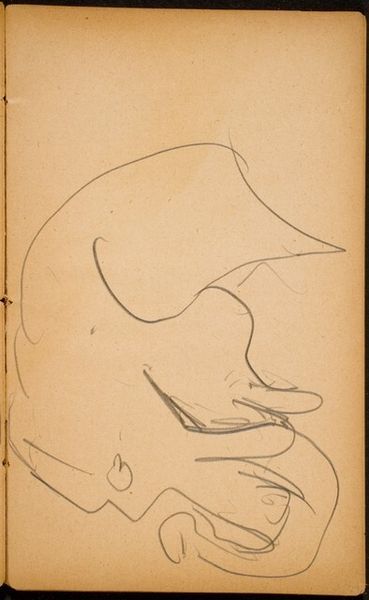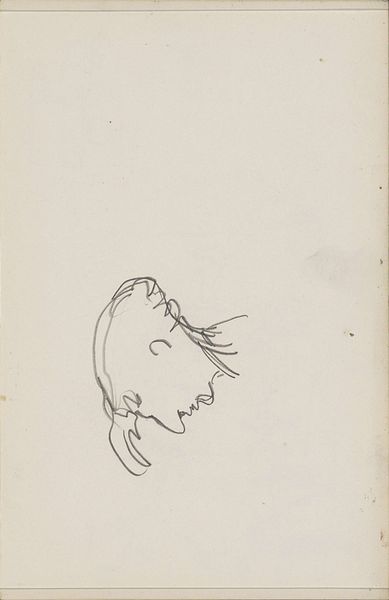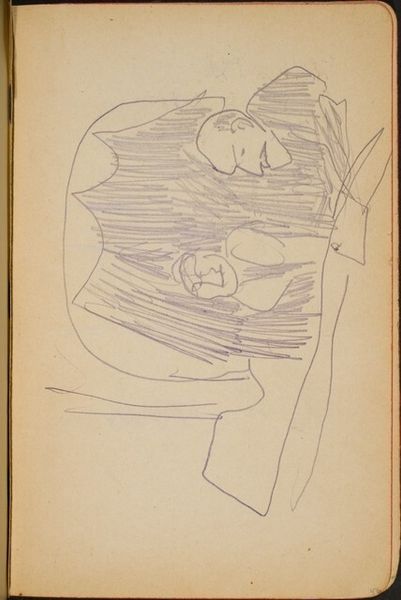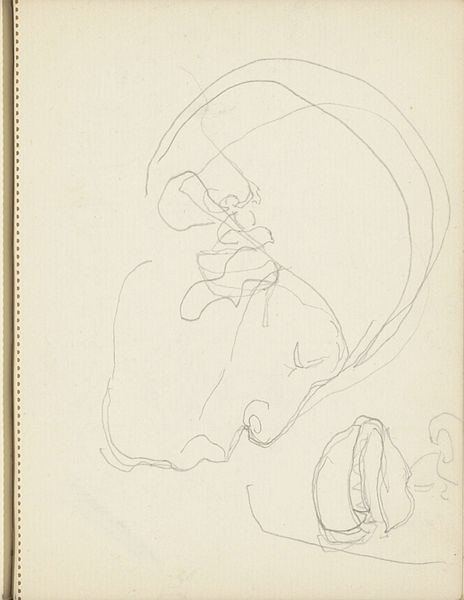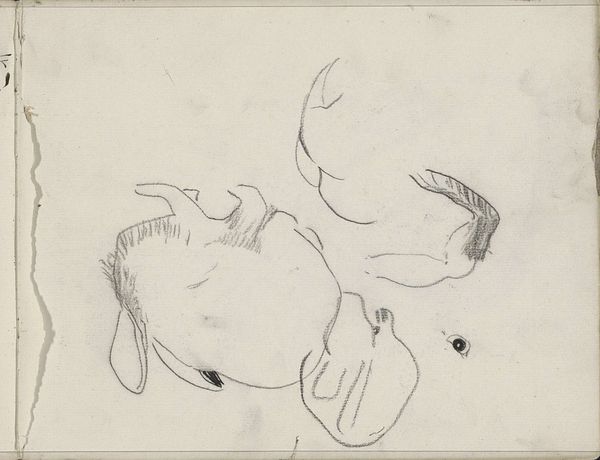![männliche Bildnisstudie (Male Portrait Study) [p. 10] by Max Beckmann](/_next/image?url=https%3A%2F%2Fd2w8kbdekdi1gv.cloudfront.net%2FeyJidWNrZXQiOiAiYXJ0ZXJhLWltYWdlcy1idWNrZXQiLCAia2V5IjogImFydHdvcmtzL2Q4YWZkZWVhLWZlYmEtNDI2ZC1iM2ZhLTNiMTE1ODAxY2Q4Ny9kOGFmZGVlYS1mZWJhLTQyNmQtYjNmYS0zYjExNTgwMWNkODdfZnVsbC5qcGciLCAiZWRpdHMiOiB7InJlc2l6ZSI6IHsid2lkdGgiOiAxOTIwLCAiaGVpZ2h0IjogMTkyMCwgImZpdCI6ICJpbnNpZGUifX19&w=1080&q=75)
drawing, ink, pen
#
portrait
#
drawing
#
ink drawing
#
pen sketch
#
pencil sketch
#
figuration
#
ink
#
expressionism
#
pen
Dimensions: sheet: 19 x 12.5 cm (7 1/2 x 4 15/16 in.)
Copyright: National Gallery of Art: CC0 1.0
Curator: Here we have Max Beckmann's "männliche Bildnisstudie," or "Male Portrait Study," rendered with pen and ink. The date is unknown, but it exemplifies his distinctive Expressionist style. Editor: Raw. That’s the first word that springs to mind. The quick, almost frantic lines give it a sense of immediacy. It feels less like a finished portrait and more like a captured thought, an impression. Curator: It's intriguing, isn’t it? You feel like you're glimpsing the very moment of creation, unfiltered. The seemingly haphazard strokes, especially around the mouth and chin, feel incredibly telling. We read those gestures now as indicators of Beckmann’s exploration of internal states, a characteristic feature of his wider figuration. Editor: Absolutely. The way the lines converge and diverge, especially around what appears to be a collar and some kind of angular head covering, draws the eye to the tension in the brow and the downturn of the mouth. I wonder if it’s a study for a larger work or perhaps a reflection of Beckmann's own frame of mind? Curator: The ambiguity contributes to its enduring power. Consider, too, the social and artistic context. Beckmann worked amidst immense upheaval in Germany; the psychological weight of the period clearly permeates this seemingly simple sketch. While seemingly rapid, there is precision, a psychological awareness of human symbol that points to much older traditions in iconic depictions. Editor: I can certainly see that. I wonder about the institutional story of this piece, where and how it has been viewed through different eras and cultural lenses. This sketch possesses such palpable energy, yet is it possible that its inherent "rawness" made it less visible during periods where finish and polish dictated value? Curator: It’s a vital question. Public perception inevitably shapes the life cycle of an artwork, doesn't it? Works like this allow us to view the artist behind the "art," the unrefined creative soul behind more polished masterpieces. Editor: Indeed. It humanizes the artist, inviting the viewer into a more intimate conversation. Thank you for unveiling a deeper layer to appreciate with this image. Curator: And thank you, this conversation has also given me a new, more human connection to the artist.
Comments
No comments
Be the first to comment and join the conversation on the ultimate creative platform.
